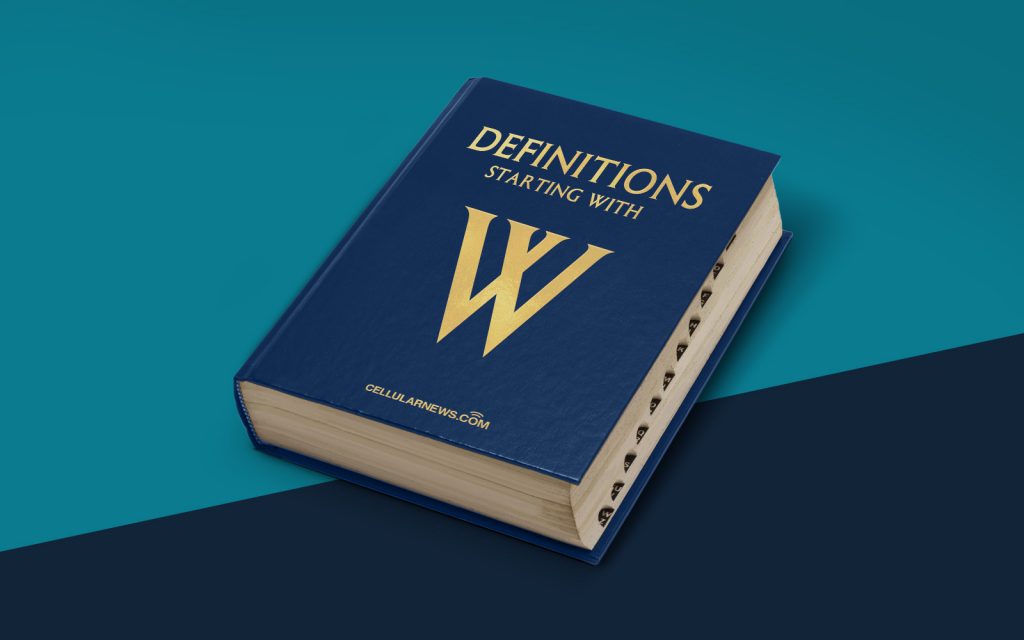
Understanding the Wrapper: A Guide to Definition and Uses
Hello readers and welcome back to our “Definitions” blog category! Today, we are diving into the world of web development and exploring the concept of a wrapper. If you’ve ever found yourself wondering “what is a wrapper and why is it important?”, you’re in the right place! In this post, we will uncover the meaning of a wrapper and shed light on its crucial role in web design. So, let’s get started!
Key Takeaways:
- A wrapper, in the context of web development, refers to a container element that is used to group and organize content on a webpage. It acts as a boundary that wraps around other elements, allowing for easier styling and manipulation.
- Using a wrapper can provide several benefits such as enhanced control over the layout, improved responsiveness for different screen sizes, and simplified styling adjustments across multiple elements.
Now that we have a basic understanding of what a wrapper is, let’s delve into its definition and uses in more detail.
Definition of a Wrapper
In the realm of web development, a wrapper is an HTML element or container that surrounds other elements. It is commonly represented by a <div> tag (though other tags such as <section> or <article> can also be used). The primary purpose of a wrapper is to group together and contain a set of related elements, providing a convenient way to manipulate and style them collectively. It acts as a parent element, encapsulating its child elements within its defined boundaries.
Think of a wrapper as a gift box – it securely wraps and contains a collection of items. Similarly, a wrapper in web development serves as a visual container for other elements, providing structure and organization to the content.
Uses of a Wrapper
Now that we understand the basic definition of a wrapper, let’s explore its practical applications and benefits:
- Layout Control: Wrappers allow web developers to have better control over the layout of a webpage. By grouping related elements within a wrapper, it becomes easier to position and manipulate them collectively. This is especially useful for creating responsive designs or aligning elements within specific sections of a webpage.
- Styling and Theming: Wrappers offer a streamlined approach to styling multiple elements simultaneously. By applying styles to the wrapper, such as setting a background color or border, you can easily apply those styles to all the wrapped elements. This saves time and reduces the need to individually style each element, resulting in cleaner and more maintainable code.
- Enhanced Responsiveness: With the growing variety of screen sizes and devices, responsive design has become crucial. Wrappers can play a significant role in achieving responsiveness by adapting the layout and behavior of wrapped elements based on screen size. By setting responsive properties to the wrapper, such as width or padding, the contained elements can adjust accordingly, providing a seamless user experience across different devices.
- Code Organization: Wrappers promote code organization and readability. By grouping related elements together, it becomes easier to understand the structure and hierarchy of the webpage. This not only aids developers during initial development but also makes future maintenance and modifications simpler, improving the overall efficiency of the project.
As you can see, wrappers are essential building blocks for web developers. They provide a valuable tool to organize, style, and control various elements within a webpage seamlessly.
Conclusion
In conclusion, a wrapper is a container element that groups and organizes content on a webpage. It acts as a boundary, encapsulating other elements and allowing for easier styling, responsiveness, and overall control. By utilizing wrappers, web developers can create visually appealing, responsive, and well-structured websites, enhancing both the user experience and code maintainability. So, the next time you encounter a wrapper in web development, remember its importance and embrace its power!
